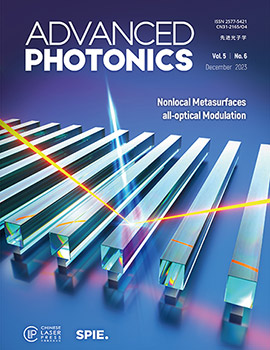Autonomous aeroamphibious invisibility cloak with stochastic-evolution learning
IF 20.6
1区 物理与天体物理
Q1 OPTICS
引用次数: 0
Abstract
. Being invisible ad libitum has long captivated the popular imagination, particularly in terms of safeguarding modern high-end instruments from potential threats. Decades ago, the advent of metamaterials and transformation optics sparked considerable interest in invisibility cloaks, which have been mainly demonstrated in ground and waveguide modalities. However, an omnidirectional flying cloak has not been achieved, primarily due to the challenges associated with dynamic synthesis of metasurface dispersion. We demonstrate an autonomous aeroamphibious invisibility cloak that incorporates a suite of perception, decision, and execution modules, capable of maintaining invisibility amidst kaleidoscopic backgrounds and neutralizing external stimuli. The physical breakthrough lies in the spatiotemporal modulation imparted on tunable metasurfaces to sculpt the scattering field in both space and frequency domains. To intelligently control the spatiotemporal metasurfaces, we introduce a stochastic-evolution learning that automatically aligns with the optimal solution through maximum probabilistic inference. In a fully self-driving experiment, we implement this concept on an unmanned drone and showcase adaptive invisibility in three canonical landscapes — sea, land, and air — with a similarity rate of up to 95%. Our work extends the family of invisibility cloaks to flying modality and inspires other research on material discoveries and homeostatic meta-devices.利用随机进化学习的自主两栖隐形斗篷
本文章由计算机程序翻译,如有差异,请以英文原文为准。
求助全文
约1分钟内获得全文
求助全文
来源期刊

Advanced Photonics
OPTICS-
CiteScore
22.70
自引率
1.20%
发文量
49
审稿时长
18 weeks
期刊介绍:
Advanced Photonics is a highly selective, open-access, international journal that publishes innovative research in all areas of optics and photonics, including fundamental and applied research. The journal publishes top-quality original papers, letters, and review articles, reflecting significant advances and breakthroughs in theoretical and experimental research and novel applications with considerable potential.
The journal seeks high-quality, high-impact articles across the entire spectrum of optics, photonics, and related fields with specific emphasis on the following acceptance criteria:
-New concepts in terms of fundamental research with great impact and significance
-State-of-the-art technologies in terms of novel methods for important applications
-Reviews of recent major advances and discoveries and state-of-the-art benchmarking.
The journal also publishes news and commentaries highlighting scientific and technological discoveries, breakthroughs, and achievements in optics, photonics, and related fields.
文献相关原料
| 公司名称 | 产品信息 | 采购帮参考价格 |
|---|
 求助内容:
求助内容: 应助结果提醒方式:
应助结果提醒方式:


